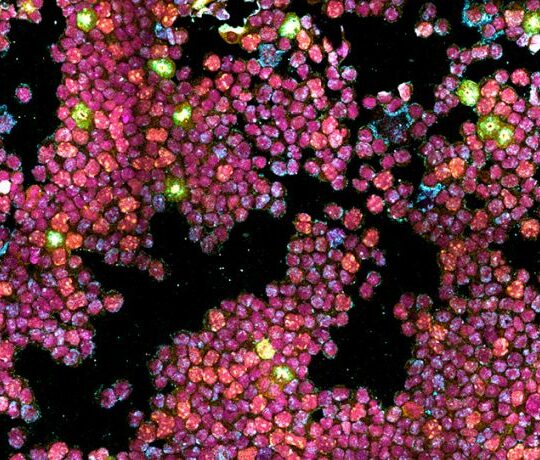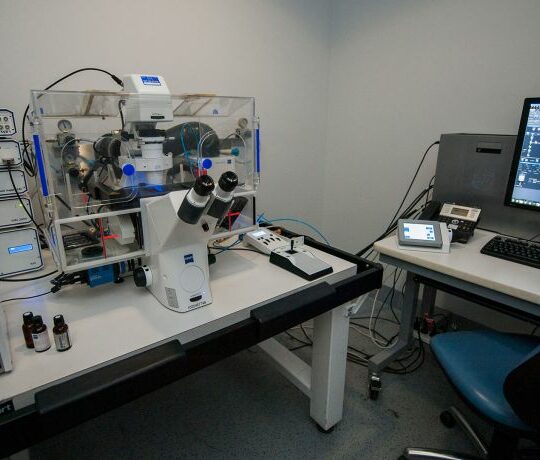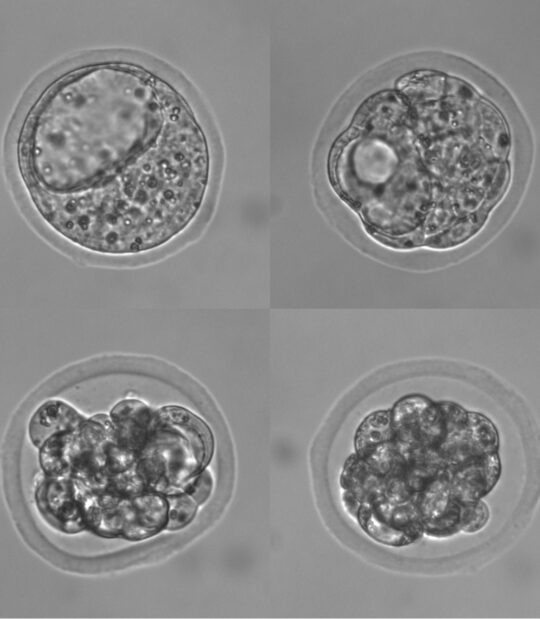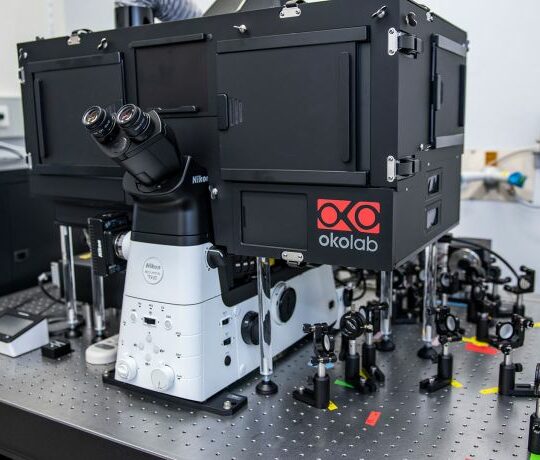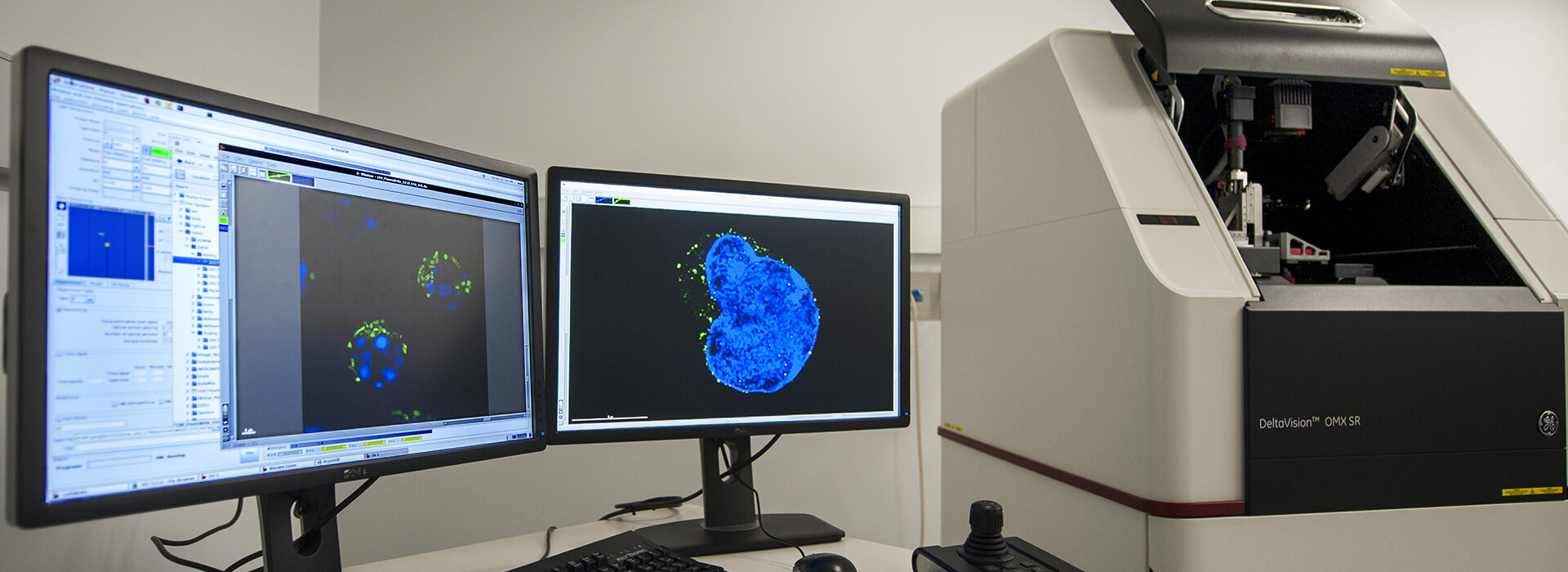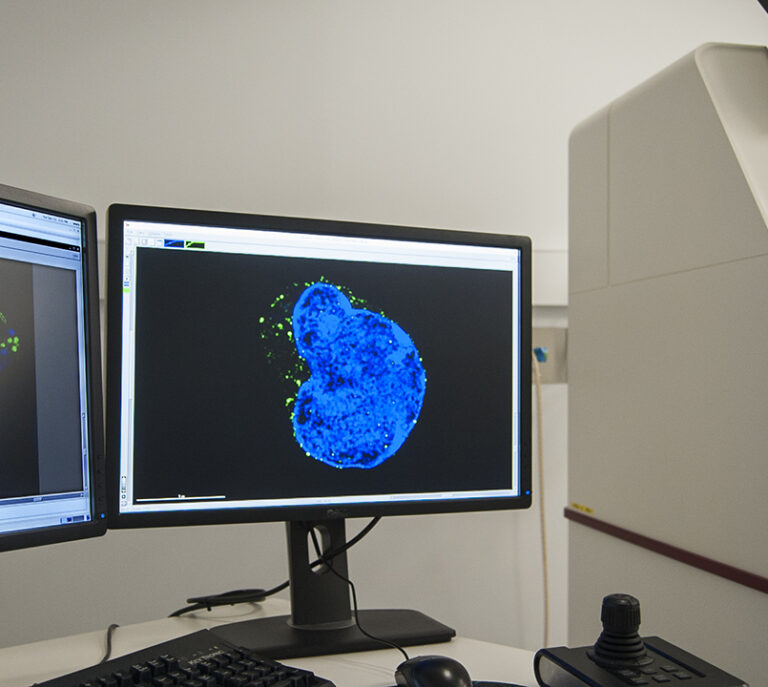The OMX SR is a live cell three-dimensional (3D) structured illumination, super-resolution microscope (3D-SIM).
The system is unique because it enables up to three colours to be captured with two-fold better resolution than conventional microscopy and with high speeds compared to other super-resolution microscopy techniques. The platform also enables two-dimensional SIM and TIRF-SIM (total internal reflection fluorescence structured illumination microscopy). It is also suitable for fixed imaging.
This technique works best on cells or thin specimens (< 15 microns), that are brightly stained.
The system is compatible with standard slides, 35 mm dishes and 8-well chamber slides. It contains all necessary accessories for environmental control, for example CO2, humidity, and temperature control.
Staff at the Centre for Dynamic Imaging can provide expert guidance on the preparation of samples and choice of fluorophores.


